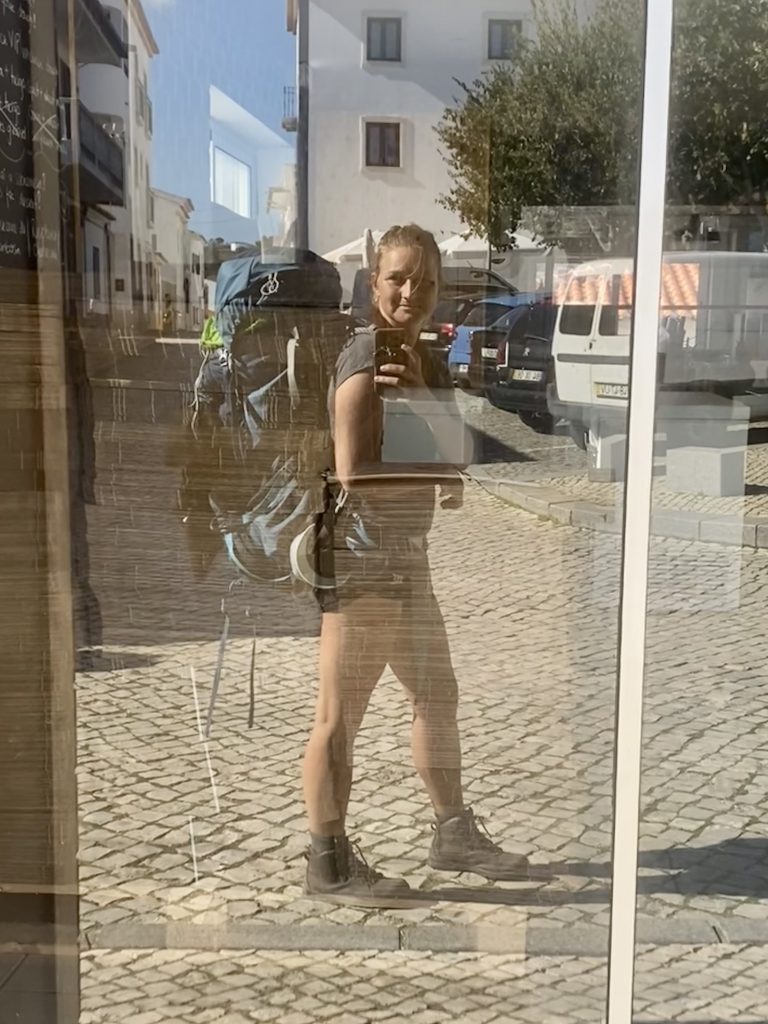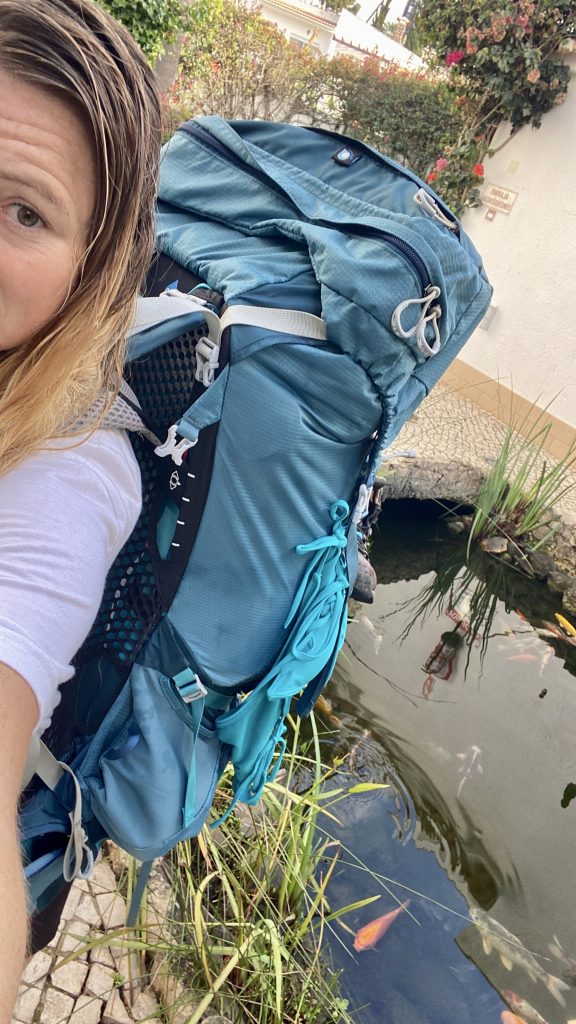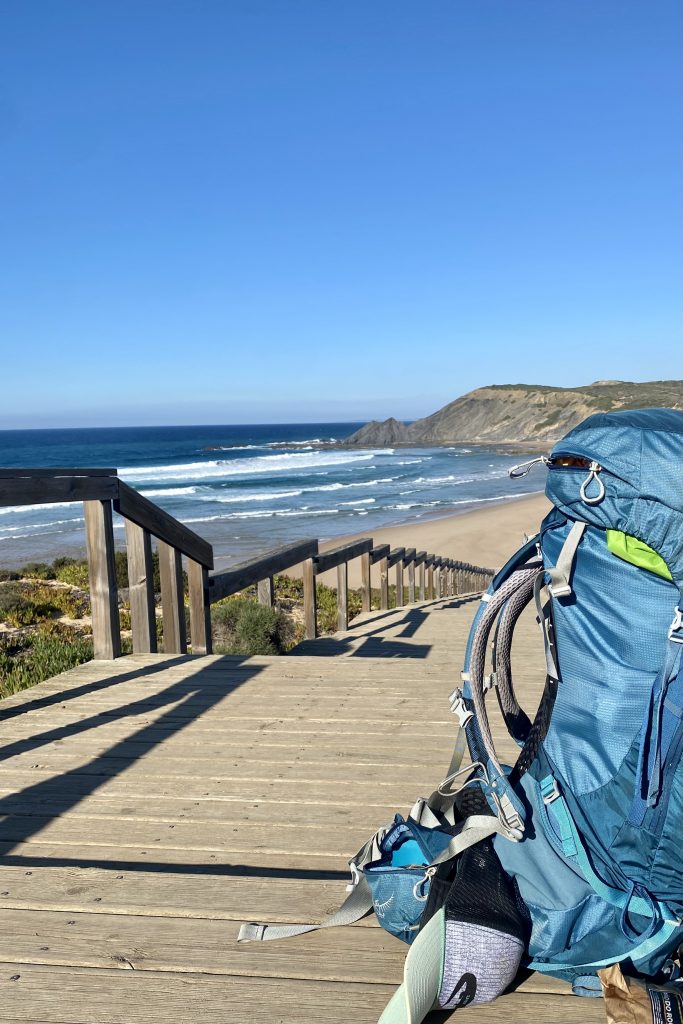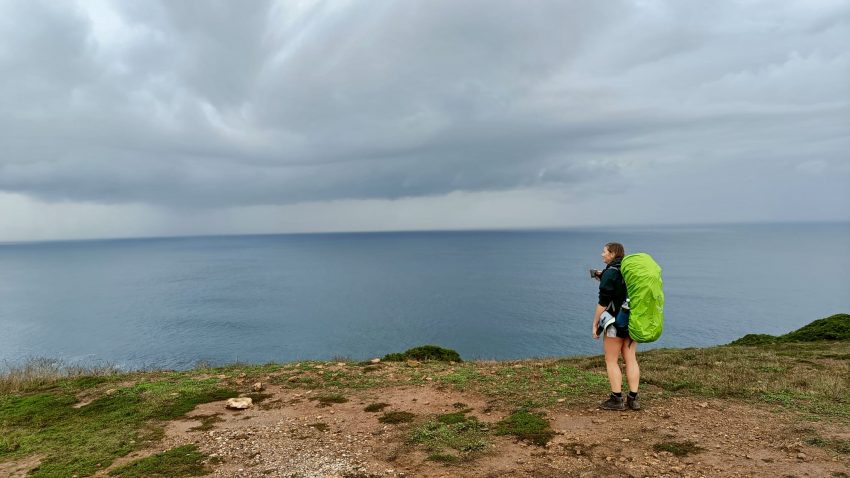What to pack, what to bring, what not to bring.
Every blog out there will rightfully tell you to pack as lightly as possible, and I whole-heartedly agree. However, back when a certain pandemic hit, I had just spent loads of money for long-distance hiking gear to be perfectly equipped for the John-Muir-Trail (s. here) and 4 years later I still haven’t taken it out properly. So I loaded up my big-ass Osprey© with the bare essentials, some luxury items and the bear essentials – Yass bitches, I brought my Bearvault BV500©. It is quite bulky and takes up a lot of space in my backpack and I had to get used to fit all other items around. It turned out to be blessing in disguise though – but more about that later. I added some heavy items such as a solar-powered power bank (works great), my Garmin inReach which in the end I forgot to try out, a mosquito net which I had forgotten existed at all and found in a remote corner in my backpack on day three, and 2 waterproof Osprey© bags. All in all, my backpack must have weighed around 12 kg, plus water. I brought my iPad and the external keypad, my notebook and fountain pen so I could do some writing. I brought two books, more clothes than necessary, and two pair of shoes besides my hiking boots: open sandals/flip flops and my Crocs© sneakers – the latter were a real blessing, and worth bringing. I would bring both again for any hike. Mental digital note for the future. Yes, the backpack was heavy. Most people carry around 5-6 kg, those who do (wild) camping up to 10 kg. On the JMT, which I will do one day, and if it is the last thing I do, I will have much more weight to carry, so why not start practicing now and see how bad my back’s gonna hurt. And it was fine, honestly. Of course, it gets heavy after a day of hiking. Everything feels heavy after a day of hiking. Shoutout to my Osprey Women’s Aura AG 65 Trekkingrucksack, 65 l, M – they’re not paying me for this, even though they should – because it sits perfectly on the hips, it spreads the weight evenly between hips and shoulders so that the latter are less impacted. And the colour, “challenger blue” is just the prettiest. I also like the many different compartments, ample space to put bottles outside, big enough zipper pockets on the front hip belt that fit my phone, too, and the extra two-compartment-bag to put on top. Since they are not paying me for this, I feel free to say that despite its many benefits, putting the Osprey Women’s Aura AG 65 Trekkingrucksack, 65 l, M on and off is a massive pain in the arse and you look very slapstick-y if you do. Needless to say, as soon as I figured out how to balance it when squatting down, it stayed on whenever I needed to pee. One of the most hotly debated topics among female hikers, as I learned. There is plenty of accommodation en route so I did not bring any camping gear. I booked everything in advance, many fellow hikers looked for rooms the day before or even on the day. Both worked fine, since it was off-season (November). Mostly surfer dudes out there or retired elder couples who stay in their vans or private houses. Sometimes I got the early booker discount, sometimes the others saved on last-minute offers. Whichever you prefer, depending on how spontaneous or anxious you are and how set on your itinerary, that’s the way to go. Booking.com is the best address, honestly, as long as you look on the map and don’t rely on the immediate search results. The hostels are surprisingly amazing, mostly. I did not expect that. Had I known beforehand, I would have booked more hostels and less private accommodation. I usually love and prefer my personal space, but I felt lonely sometimes whenever I had my secluded place.
Anyway, here are the items I found to be essential and would bring again:
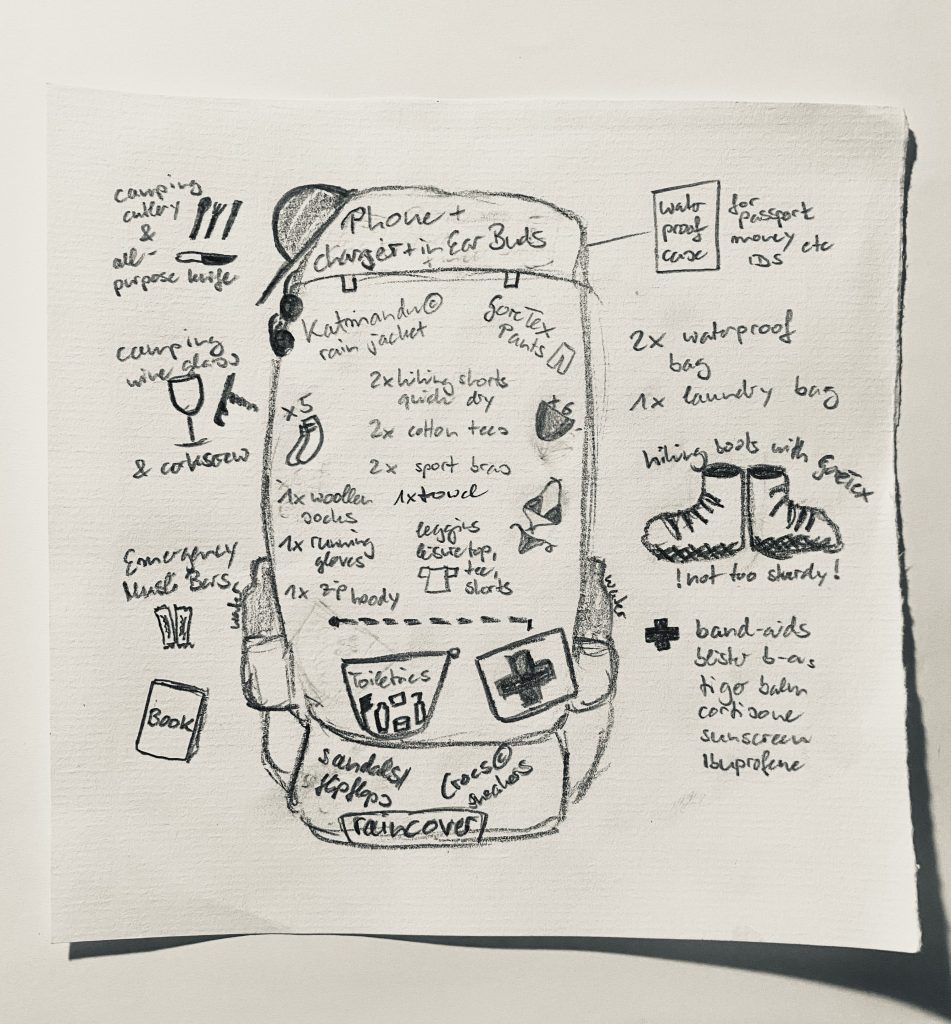
For the hiking boots, I brought actual hiking boots, ankle height. Not the super study Alpine boots, that’s not necessary and too heavy to drag and tread through the sand. Lots of people hiked the trail in trekking / trail runners which is fine but you end up getting sand in your shoes more often. My boots had a GoreTex layer which was perfect for crossing little streams or walking on the beach when the waves were coming in. My Katmandu© rain jacket was a present from my brother. I’ve travelled Tambourine mountain and its jungles and forests with it, so it has been wind- and waterproven itself over and over again. For hiking pants, I prefer shorts, hence two of those and only one long pair of GoreTex pants for really bad weather. I only wore them once since I was very lucky with the weather. As tops, I always wear worn-out cotton shirts, sort of like one last hurrah before throwing them out. I’m not particularly keen on mesh shirts but that’s a personal preference. I did not wear the woollen socks or the running gloves I brought – again, due to very mild temperatures – but I would bring them again, just in case. Nothing better than snuggling up in warm socks on a cold evening. And I have Raynaud’s disease, so if it gets cold my fingers get numb. The rest is pretty self-explanatory. I like to have a bit of a safety net when it comes to hiking socks and underwear, others probably brought less. But then it neither takes up much space nor does it weigh very much. And if you are wondering: yes, when hiking in wine-country Portugal you want to bring a corkscrew and a wine glass to enjoy some vinho verde or a strong red Duoro after a long day of hiking. My plastic yet classy foldable wine glass with a liquid-proof protection case was broadly admired. It’s essential, really. Saúde.
Things I thought I would need but didn’t: hiking sticks, which I left at home anyway. I am not a huge fan of hiking with sticks and imho, on the sand it is just a nuisance and doesn’t really help at all. So I have heard. A sleeping bag, because the bedding was generally (and surprisingly) really good and I was never cold. Refillable, foldable water bottles – lots of water from the tap tastes like chloride so you end up buying bottled water anyway. So for this particular hike definitely redundant.
When hiking, you quickly learn which items you think are essential and which really are essential. It’s a learning by doing and all recommendations out there can only give you an idea. Some basics should always be covered so pack everything they all have in common is my general advice – but from there it totally depends on what you need to feel comfy and well-equipped. And if that entails carrying a little more stuff than just the bare minimum – so be it, you do you. You’re the one carrying it after all.
